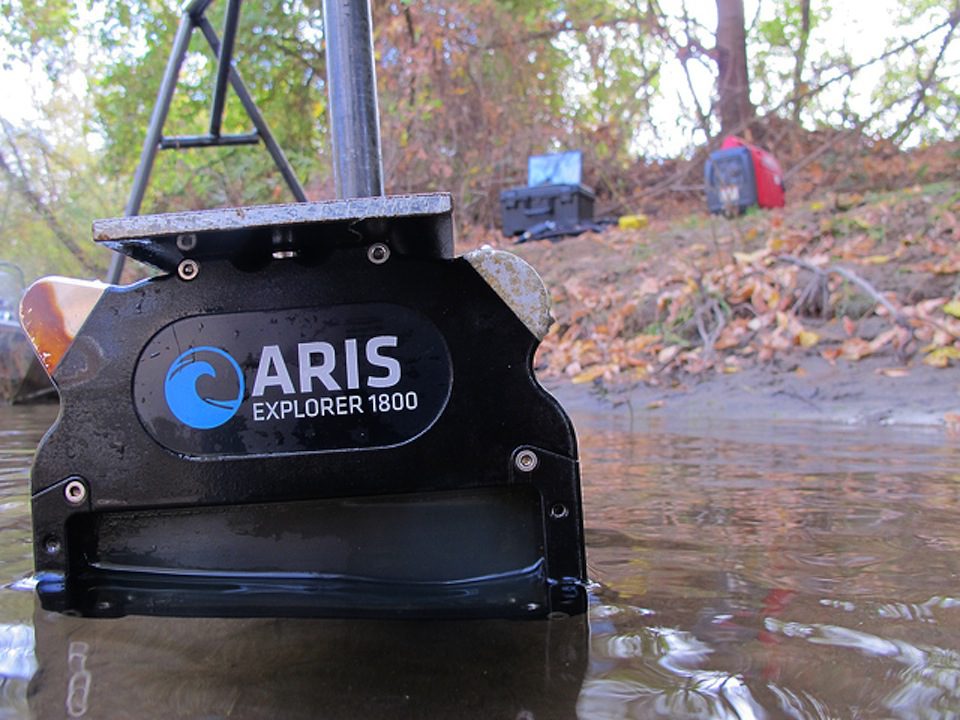Monday January 26, 2015

Close your eyes and plunge your mind into the depths of a rushing river at midnight. It’s dark and cold, and the constant pressure of moving water—weighing more than eight pounds per gallon—relentlessly pushes against you. Now, imagine a device that gives you the ability to open your eyes and see in amazing detail everything that surrounds you in that same dark and frigid river—all from the comfort of your boat. Talk about a fisheries biologist’s dream tool. We’d like to introduce you to one of the most powerful tools now available to fisheries research: the Adaptive Resolution Imaging Sonar (ARIS) camera. Based on technology initially developed for the military, this device is now used for investigating the detailed movement and behavior of fishes.
In our newest video review, we show how to utilize the amazing capabilities of the ARIS for fisheries research. Based on Dual-Frequency Identification Sonar (DIDSON) technology, the ARIS is the most cutting-edge hydro-acoustic sampling method available today. The ARIS camera can produce near-video-quality imagery in high turbidity and zero-light conditions because the camera uses sound waves instead of light waves to “see” underwater. Sophisticated software created by Sound Metrics Inc. not only processes the echolocation data into a visual image, but also allows the camera user to retrieve range and size information from the footage with a simple click of the mouse. We’ve used both ARIS and DIDSON technology in our research at FISHBIO, and have been very impressed by several ways in which the ARIS improves on the DIDSON, such as the higher resolution of the imagery, and improvements to the post-processing software that make it faster to review the collected footage.
With the ability to capture details as small as a few millimeters, and view targets at a range of up to 40 meters, the ARIS is an incredibly powerful tool with nearly unlimited applications, judging from our experience. Our team at FISHBIO has already used this camera for a variety of different projects, including estimating adult salmonid escapement, observing fish behavior in relation to operational changes at a hydroelectric facility, determining the effects of invasive aquatic plants on salmon migration, and assessing the effects of habitat mitigation features on juvenile salmonid abundance. Of course, all of these projects would not be possible without the innovative camera mounts constructed by our FABLAB. We now have a number of custom mounting systems at our disposal that enable us to control the depth, pan, tilt, and roll of the camera, whether on shore or on a boat. This combination of tools allows us to acquire the most accurate and effective data in any setting.
Watch our fisheries biologists and technicians walk through various aspects of the ARIS technology and our custom mounts in this video review. This is our latest in a series of how-to and technical videos we have produced over the years. Browse our YouTube channel for more videos on topics such as how to install a Vaki RiverWatcher on a resistance board weir and retrieve data from the RiverWatcher, how to program hydroacoustic tags, how to surgically implant hydroacoustic tags into juvenile salmon — and even how to fry fish Lao style. We love sharing information about the tools and technology we use to get our work done. Stay tuned for more video tutorials to come!
This post featured in our weekly e-newsletter, the Fish Report. You can subscribe to the Fish Report here.
